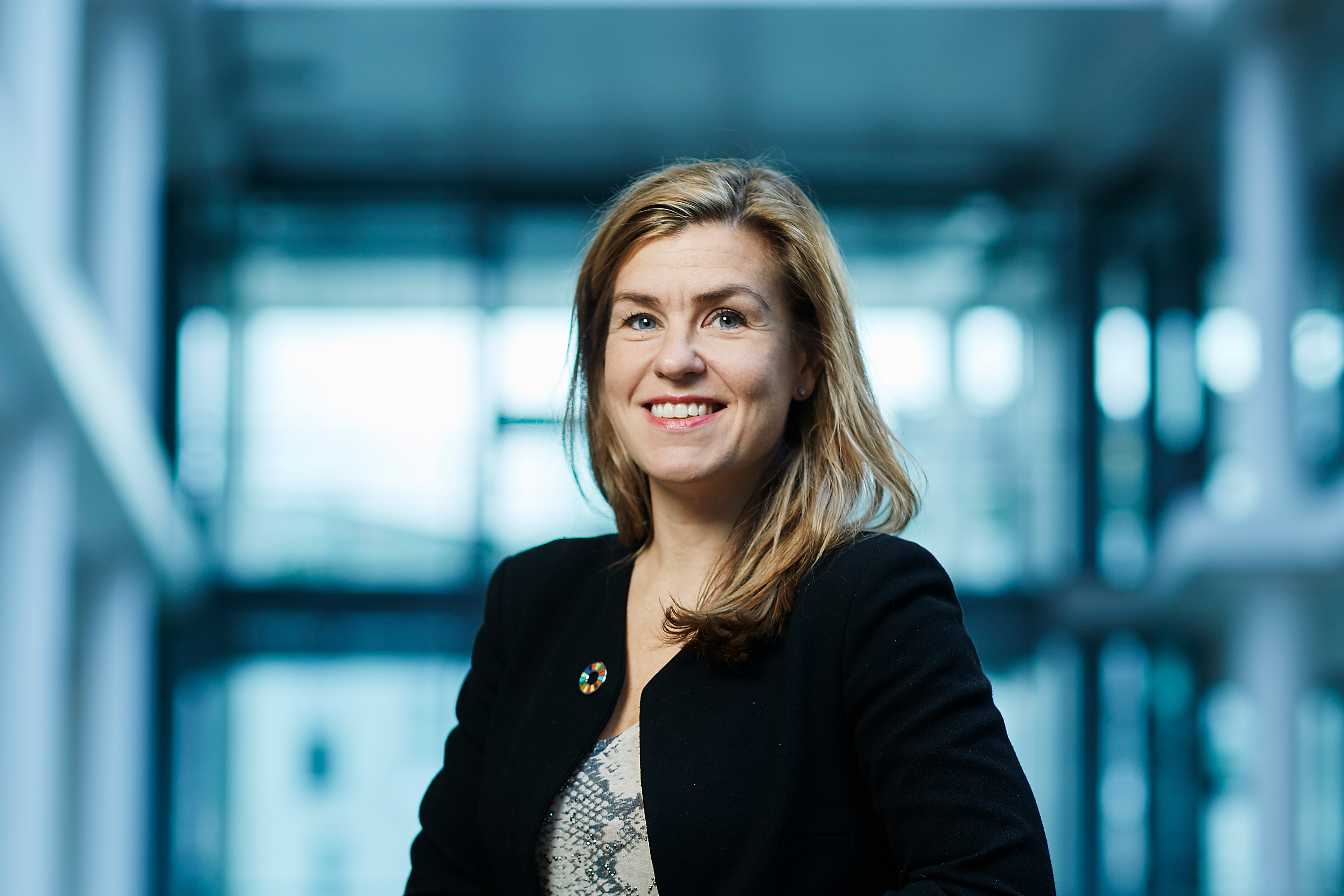EY refers to the global organization, and may refer to one or more, of the member firms of Ernst & Young Global Limited, each of which is a separate legal entity. Ernst & Young Global Limited, a UK company limited by guarantee, does not provide services to clients.

Scenario planning can illuminate how well an asset is positioned for growth in a world of accelerating climate change.
In brief
- PE is in a unique position to lead our transition to a low-carbon, circular economy.
- Imaginative yet data-driven scenario planning can expose climate-related risks in an asset evaluation process.
- For PE, a mindset shift is a critical foundation.
As private equity (PE) firms pivot to an increased focus on sustainability, they must also pivot to a long-term, forward-thinking mindset. For an industry accustomed to using historical data to project the next four to five years, this is no simple task; however, it is an existential one. Climate change will mean our world looks very different in a decade regardless of the action we take (or don’t take), and private equity firms are uniquely equipped to lead this mission, should they choose to accept it.
While some investors may view the Paris Agreement as an impediment, others view it as the business opportunity of our time. Given the broad spectrum of sentiment and buy-in among investors when it comes to climate change, PE investors keen to lead our transition to a low-carbon and circular economy are choosing to leverage the agreement’s benchmarks to both establish and accelerate the integration of climate-related objectives. As limited partners (LPs), especially institutional investors, increasingly hold PE firms to greener standards, one can be sure this pressure will only increase as more diverse voices take a seat at the table.
Opportunity and sustainability are not mutually exclusive concepts: if today’s PE leaders can’t figure out how to capture the upside from saving the planet, tomorrow’s PE leaders certainly will. Because PE employs some of the brightest minds and has amassed over US$3t in dry powder, isn’t the real question, “Why wouldn’t PE take the lead?”
Adding climate competence to existing excellence
Private equity excels at many things: creating value, driving returns, improving efficiency, fuelling innovation and managing change. What PE firms lack at scale is competence in sustainability and the experience necessary to identify promising opportunities both in their portfolio and in the market. The ability to distill a climate risk story into a palatable investment thesis is a novel challenge, so it’s important the professionals who possess this ability are given a seat at the table.
When setting the table for deal teams and key decision-makers, PE firms focused on investing for the future have added new place settings for heads of ESG and sustainability. For example, in collaboration with trusted EY advisors, FSN Capital has developed a standard approach to integrating ESG and climate risks and opportunities throughout the investment cycle. Deal teams are required to conduct a high-level climate risk assessment prior to any investment proposal, and all portfolio companies are enrolled through the ESG Strategy Framework as part of the onboarding process. Under the ESG Strategy Framework each portfolio company develops a tailormade ESG strategy with both long- and short-term goals. A climate change assessment is part of the analysis conducted under the ESG Strategy Framework, to verify that the strategy and operations are climate change-resilient.
“Standardized approaches to ESG and climate change help us efficiently identify topics that are material to value creation, and which should be focused on during the holding period,” Rebecca Svensøy, General Counsel at FSN Capital, explains. “Moreover, the mandatory climate change due diligence and the ESG Strategy Framework have proven to be efficient training elements for the deal teams as they are required to actively participate in the assessments, annual ESG strategy updates and ESG reporting.”
In addition to reconfiguring deal teams to include climate competence, it may be helpful for non-European investors to look to European firms such as FSN Capital for leadership in this arena. Europe has reached a tipping point at which even the more conservative investors recognize both the opportunity and urgency that climate change poses. In addition to learning from European firms, frameworks such as the Principles for Responsible Investment give investors a starting block. The resources, intelligence and leading practices do exist, should investors choose to leverage them.
Recognizing both extrinsic and intrinsic risks
One thing is certain regarding climate risk and opportunity: we cannot nurture the status quo. Two overarching scenarios are possible, both of which require comprehensive adaptation and imagination:
- A warming scenario in which rising temperatures impact access to raw materials, stoke political stability and disrupt value chains
- A transition scenario characterized by increasing regulation, bans and changes in technology and consumer preferences
The extrinsic risks derived from climate change that resonate with PE investors include:
- Competitive threats
- Regulatory mandates or bans
- Risk of stranded assets
- Operational risk
- Increased costs
In addition, PE must acknowledge the presence of intrinsic risks, such as:
- Need for imagination: in an industry in which projections and decisions are often made using backward-looking data and financial engineering, PE firms must learn to value imaginative, “outside-the-box” thinking if they aspire to mitigate or eliminate climate risk.
- Need for patience: as hold periods extend from 3—5 years to 5—10-plus, PE investors must evolve their models, expectations and incentive structures to create long-term value and incorporate rapidly changing climate realities.
- Confirmation bias: this type of cognitive bias is a well-known behavioral mistake in investing. According to a 2016 column by Forbes contributor Peter Lazaroff, “investors tend to gather confirming evidence when making investment decisions rather than evaluate all available information. The impact of confirmation bias is even stronger with an existing belief since you are more likely to quickly accept evidence that supports that existing belief and closely scrutinize evidence that challenges it.” In other words, PE investors must be wary of their inherent bias toward previously successful industries or deal theses when challenged with novel climate-related data.
“Climate change” is an amorphous term that only becomes meaningful when made relevant to a particular constituent in a specific context. In addition to being relevant, it must be comfortable, and therein lies the unique challenge for PE: because many reverberations of climate change are unforeseeable, convincing PE investors to be comfortable with incalculable uncertainty is no small feat.
Scenarios should supplement or supersede statistics
Scenario planning for climate risk is a valuable and necessary exercise in asset evaluation that seeks to illuminate how well a potential asset is positioned for growth in a world of accelerating climate change. A focus on forward-looking insights derived from robust scenario planning is critical, and firms that neglect to do so could find themselves exposed as climate change continues to unfold and the impacts move to center stage.
In the below example, EY teams created multiple bespoke scenarios that draw on a vast, evergreen database of climate data to envisage how degrees of temperature change are likely to impact a clothing company’s supply chain and value chain. PE firms are wise to conduct such an analysis early on to gauge a potential target’s resilience to climate change as well as the relevance of its product or service to increasingly climate-conscious customers and consumers.
Six ways PE can shift their mindset to increase their climate competence and confidence
For PE investors eager to pivot but unsure where to turn, the first step is to consider evolving their mindset:
- Champion a long-term, forward-looking perspective
- Cross-pollinate climate data across workstreams
- Incorporate climate scenarios as core data points
- Engage diverse, “uncomfortable” perspectives
- Embrace complexity and curiosity
- Verify competence on climate and environmental risks in investment teams
Summary
As PE investors embrace their vital role in transitioning our global economy to low-carbon and circular, they must embrace an asset evaluation approach in which robust scenario planning complements, and in some cases supersedes, traditional approaches to forecasting and valuation.
Related Articles
Why private equity firms should be embedding ESG in their portfolio
With ESG moving up the agenda, PE managers need to embed it in their long-term value narrative.
Why ESG performance is growing in importance for investors
The post-pandemic investment landscape is set to place greater value on environment, social and governance (ESG) disclosures. Find out more.
How EY can help
-
Value creation is at the core of every transaction investment thesis. Our business is organized, resourced and led to help private equity firms transform companies and increase their ability to create more value across their portfolio.
Read more





